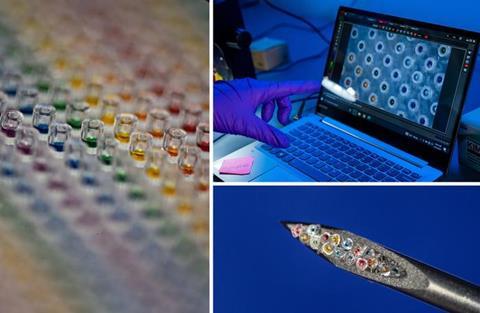Rice University bioengineer Kevin McHugh has been awarded $3.4 million from the Bill & Melinda Gates Foundation for a project to incorporate protection against poliomyelitis (polio) into the combination vaccine that protects against five common and dangerous childhood diseases.

The research could help the polio eradication effort and play an instrumental role in improving access to immunization in low-resource settings ⎯ an important part of meeting sustainable development goals and achieving equity in health outcomes across the globe. Polio is a highly infectious disease that largely affects children under 5 and can cause paralysis, breathing difficulties and even death.
READ MORE: First phase of polio campaign concludes successfully in Gaza
READ MORE: WHO pays tribute to polio-eradication leader Aidan O’Leary
“Combining vaccines is a proven method for reducing the logistical burden associated with vaccination, which improves health care accessibility and vaccination rates, especially in low-resource settings,” said McHugh, assistant professor of bioengineering and chemistry and a Cancer Prevention and Research Institute Scholar. “Unfortunately, in some cases the components present in one vaccine formulation can render another vaccine less effective, limiting the ability to combine those vaccines in a single vial.”
Poliovirus-like particles
Building on the recent development of polioviruslike particles (VLPs) that mimic the outer shell of the virus but carry none of the viral genetic material, the McHugh lab at Rice aims to use its fabrication platform called PULSED (short for Particles Uniformly Liquified and Sealed to Encapsulate Drugs) to mitigate the risk of incompatibility between polio VLPs and materials present in the pentavalent vaccine.

“Encapsulating polio VLPs in our PULSED microparticles allows us to form a barrier that physically separates polio VLPs from the incompatible components of the pentavalent vaccine,” McHugh said. “Then once the body has naturally cleared these components from the injection site — an interval we posit could be two to four days — polio VLPs will be spontaneously released from PULSED microparticles, which will allow the recipient to attain the full benefit of all the vaccines administered.”
Incorporating polio VLPs into the pentavalent vaccine formulation would make it octavalent, i.e. capable of protecting children under 5 from eight different pathogens ⎯ diphtheria, tetanus, whooping cough, hepatitis B, a type of bacteria that can give rise to pneumonia and meningitis and all three strains of poliovirus.
Eliminating risk
Vaccines teach the immune system to recognize and attack pathogens before they spread and infect the host organism. One of the mechanisms for achieving this is to present the organism with something that looks like the virus but will not cause illness ⎯ often this consists of viruses that have been chemically treated to eliminate their infectivity while retaining their structural similarity to the live virus. This is the case of the inactivated poliovirus vaccine, which requires growing live poliovirus in a cell culture and then chemically killing and purifying the virus from the cells. In contrast, VLPs remove the requirement for poliovirus production, therefore eliminating the risk of accidental exposure during manufacturing.
“Our hope is to make a polio-free world a reality,” McHugh said.
Thanks to the Global Polio Eradication Initiative, the number of polio cases worldwide has dropped by over 99% since 1988, but the disease has persisted in areas with poor access to immunization and threatens resurgence, especially in areas with compromised infrastructure such as conflict zones. Most recently, the disease made headlines for an outbreak in Gaza.
“We are honored by the foundation’s support and eager to put our plan into action,” McHugh said.
Video available at https://www.youtube.com/watch?v=qWE_28gFgxE







No comments yet